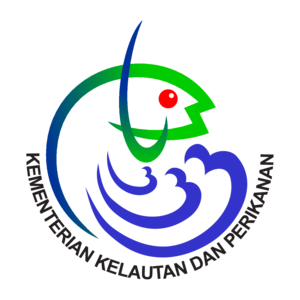Kondisi Ekosistem Terumbu Karang di Lokasi dan Bukan Lokasi Penyelaman Pulau Maratua
Abstract
Keywords
Full Text:
PDFReferences
Ahmadia, G. N., Wilson J. R., & Green, A. L. (2013). Protokol Pemantauan Terumbu Karang Untuk Menilai Kawasan Konservasi Perairan. Terj. dari. Coral Reef Monitoring Protocol for Assessing Marine Protected Areas version 2.0. Coral Triangle Support Partnership, Jakarta: xiii + 78 hlm.
Anonim. (2017). Pulau maratua berbenah segera lengkapi fasilitas penunjang. http://www.kliksangatta.com/berita-8596-pulau-maratua-berbenahsegera-lengkapi-fasilitas-penunjang. html diakses tanggal 0060917 jam 11.14
Allen, G. R., & Steene, R. (1998). Indo-Pacific coral reef field guide. Sea Challengers, Danville: 378 hlm.
Allen, G. R., & Werner, T. B. (2002). Coral reef fish assessment in the “Coral Triangle” of Southeastern Asia. Environmental Biology of Fishes, 65(2), 209-214.
Allen, G. R., & Adrim, M. (2003). Coral reef fishes of Indonesia. Zool. Stud, 42(1), 1-72.
Allen, G. R. ( 2008). Conservation hotspots of biodiversity and endemism for Indo‐Pacific coral reef fishes. Aquatic Conservation: Marine and Freshwater Ecosystems, 18, 541-556.
Bachtiar, I. (2001). Reproduction of three scleractinian corals (Acropora cytherea, A. nobilis and Hydnophora rigida) in eastern Lombok Strait, Indonesia. Indones J Mar Sci 21,18-27.
Bachtiar, I.(2003). Reproduction of scleractinian corals: a review. Pusat Penelitian Pesisir dan Laut (P3L), Universitas Mataram. Biota 8(3):131-134.
Barker, N. H. L, Callum M. Roberts. (2003). Scuba Diver Behavior and Management of Diving Impact on Coral Reefs. Elselvier, 120(4):481-489.
Becking, L. E., Cleary, D. F. R., & de Voogd, N. J. (2013). Sponge species composition, abundance, and cover in marine lakes and coastal mangroves in Berau, Indonesia. Mar. Ecol. Prog. Ser. 481, 105-120.
Burke, L., Selig, E., & Spalding, M. (2002). Reefs at risk in Southeast Asia. World Resources Institute, United Nations Environment Program-World Conservation Monitoring Center, World Fish Center, dan International Coral Reef Action Network, USA: 40 hlm.
Burkepile, D. E., & Hay. M. E. (2009). Nutrient versus herbivor control of macroalgal community development and coral growth on a Caribbean reef. Mar Ecol Prog Ser. 389, 71–84.
Clark, A. M., & Rowe, F. W. E. (1971). Monograph of shallow-water Indo-West Pacific echinoderms. British Museum (Natural History), London: ix + 269 hlm.
Clark, J. R. (1996). Coastal zone management. Handbook. CRS Press. Lewis Publishers. Florida
Collin, P. L. & Arnesson, C. (1995). Tropical Pacific Invertebrates. Coral Reef Press, California: 290 hlm.
Cornell, H. V., & Karlson, R. H. (2000). Coral species richness: ecological versus biogeographical influences. Coral reefs,19(1), 37 - 49.
Dahuri, R. (2003). Keanekaragaman Hayati Laut Aset Pembangunan Berkelanjutan Indonesia. PT. Gramedia Pustaka Utama. Jakarta.
De Voogd, N. J., & van Soest, R. W. M. (2005). Indonesian sponges of the genus Petrosia Vosmaer (Demospongiae: Haplossclerida). Dalam: de Voogd, N.J. (2005). Indonesian Sponges. Biodiversity and mariculture potential. Phd thesis, University of Amsterdam, Amsterdam: 21-37 hlm.
Debelius, H. (1996). Nudibranchs and sea snails Indo-Pacific field guide. IKAN – Unterwasserarchiv, Frankfurt: 321 hlm.
Dharma, B. (1992). Siput dan Kerang Indonesia II. Verlag Christa Hemmen, Wiesbaden: 135 hlm.
Dinas Kebudayaan dan Pariwisata Kabupaten Berau. (2017). Penguatan Ekonomi Masyarakat Kabupaten Berau Bidang Industri Pariwisata Tahun 2018. Rapat Koordinasi Perencanaan Se Kalimantan Timur Tahun 2017 Selasa 7 Maret 2017, Novotel Balikpapan.
Dominici, A. A., & Wolf, M. (2006). Reef fish community structure in the Tropical Eastern Pacific (Panama): living on a relatively stable rocky reef environment. Helgol Mar Res, 60(4), 287-305.
English, S., Wilkinson, C., & Baker, V. (1997). Survey Manual for Tropical Marine Resources (2nd edition). Australian Institute for Marine Science, Townsville
Estradivari & Yusri, S. (2006). Coral reefs of Seribu Islands, Western Indonesia. Makalah pada 1st Asia Pacific Coral Reefs Symposium, Hongkong: 11 hlm.
Gomez, E., Alcala, A., Yap, H., Alcala, L., & Alino, P. (1985). Growth studies of commercially important scleractinians. Proceedings of the 5th International Coral Reef Congress 6:199-204
González-Rivero, M., Yakob, L., & Mumby, P. J. (2011). The role of sponge competition on coral reef alternative steady states. Ecol Model, 222(11), 1847-1853.
Gosliner, T., Behrens, D.W., & Williams, G. C. (1996). Coral reefs animal of the Indo-Pacific. Sea Challengers, Monterey: vi + 314 hlm.
Hammerton, Z., & Bucher, D. (2015). Levels of intervention - reducing SCUBA-diver impact within subtropical marine protected areas. Journal of Ecotourism, 14(1):3-20.
Harriott VJ, Davis D. Bank SA. (1997). Recreational Diving and Its Impact in Marine Protected Area in Eastern Australia.
Hawkins JP, CM Robert. (1992). Effect of Recreational Scuba Diving on Reef Slope Communities of Coral Reef. Biological Conservation.
Hill, J., & Wilkinson, C. (2004). Methods for ecological monitoring of coral reefs: A resource for managers. Australian Institute of Marine Science and Reef Check, Australia.
Juhasz, A., Ho, E., Bender, E., & Fong, P. (2010). Does use of tropical beaches by tourists and island residents result in damage to fringing coral reefs A case study in Moorea French Polynesia. Marine Pollution Bulletin, 60(12), 2251-2256. doi:http://dx.doi.org/10.1016/j.marpolbul.2010.08.011.
Kuiter, R. H., & Tonozuka, T. (2003). Pictorial guide to: Indonesian reef fishes. Part 2. PT. Dive & Dive’s. Denpasar, Bali.
Laksono, A. N., & Mussadun. (2014). Dampak Aktivitas Ekowisata di Pulau Karimunjawa Berdasarkan Persepsi Masyarakat. Jurnal Teknik PWK, 3(2), 262-273.
Lieske, E. & Myers, R. (1994). Reef fishes of the world. Reprinted 1997. Periplus Editions Ltd. Hongkong.
Liew, H. C. (2001). The Impact on Coral Reefs by Leisure Divers in Redang. National Symposium on Marine Park and Island in Trengganu.
Lim, L. C. (1998). The concepts and analysis of carrying capacity; A management tool for effective planning. Part I. Report produced under bay of Bengal Programme. Madras. India.
Ludwig, J. A., & Reynolds, J. F. (1998). Statistical ecology: a primer methods and computing. John Wiley & Sons, New York: xviii + 337 hlm.
Madduppa. H. (2013). Bioekologi dan biosistematika Ikan Terumbu : Teknik Sampling Genetika dan Biomonitoring Studi Kasus Kepulauan Seribu, Petunjuk Identifikasi Ikan di Indonesia. IPB Press. Bogor.376 P.
Magurran, A. E. (1988). Ecological diversity and its measurements. Princeton University Press, Princeton: x + 179 hlm.
Neter, J., Kutner, M. H., Nachtscheim, C. J., & Wasserman, W. (1996). Applied Linear Statistical Models. Fourth Edition. Mc. Graw Hill: 1408 hlm.
Obura, D.O. & Grimsdith, G. (2009). Resilience Assessment of coral reefs - Assessment protocol for coral reefs, focusing on coral bleaching and thermal stress. IUCN working group on Climate Change and Coral Reefs. IUCN, Gland, Switzerland. 70 pp.
Purwita, I. P. (2010). Pengelolaan wisata bahari dengan pendekatan ekosistem terumbu karang di Kelurahan Pulau Panggang, Kabupaten Administratif Kepulauan Seribu (dalam kegiatan diving dan snorkeling). Tesis. Fakultas Perikanan dan Ilmu Kelautan. Institut Pertanian Bogor.
Randall, J. E, Allen, G. R., & Steene, R. C. (1997). Fish of The Great Barrier Reef and Coral Sea. Periplus Edition (HK) Ltd. Hongkong
Razak, T. (2006). Hard coral & reef fish community on the EcoReefs rehabilitation site, Manado Tua Island, Bunaken National Park, North Sulawesi, Indonesia. A monitoring report, Indonesia: 35 hlm. (tidak dipublikasikan).
Sprung, J. (2001). Invertebrates: A Quick Reference Guide. Ricordea Publishing. Miami: 240 hlm.
Stoecker, D. (1978). Resistance of a tunicate to fouling. Bio. Bull. 155(3), 615-626.
Suwanborirux, K., Charupant, K., Amnuoypol, S., Pumangura, S., Kubo, A., & Saito, N. (2002). Ecteinascidins 770 and 786 from the Thai tunicate Ecteinascidia thurstoni. J. Nat. Prod, 65(6), 935–937.
Tomascik, T., Mah, A. J., Nontji, A., & Moosa, M. K. (1997). The Ecology Of Indonesian Seas. Perplus Editions, 1387 p.
Veron, J. E. N. (2000). Corals of Australia and Indo-Pacific. Angus & Robertson Publishers, Australia.
Wahab, M. A. A., Nys, R., Webster, N., & Whalan, S. (2014). Larval Behaviours and their contribution to the distribution of the intertidal coral reef sponge Carteriospongia foliascens. PLOS ONE, 9(5), 1-13.
Yulianda, F. (2007). Ekowisata Bahari Sebagai Alternatif Pemanfaatan Sumberdaya Pesisir Berbasis Konservasi. [Makalah]. Seminar Sains Departemen Majemen Sumberdaya Perairan. FPIK. IPB. Bogor
Zhang, L. Y., Chung, S. S., & Qiu, J. W. (2016). Ecological carrying capacity assessment of diving site: A case study of Mabul Island, Malaysia. Journal of Environmental Management, 183(1), 253-259.
Zul, D., Fibriarti, B. L., Yunita, M., Halimah, S., & Komariah, S. (2013). Dampak Alih Fungsi Lahan Terhadap Biomassa Mikroba: Studi Kasus di Areal Bukit Batu, Riau. Prosiding Semirata. FMIPA Universitas Lampung. Bandar Lampung.
DOI: http://dx.doi.org/10.15578/jkn.v14i1.6898
Copyright (c) 2019 Jurnal Kelautan Nasional
Copyright of Jurnal Kelautan Nasional (p-ISSN 1907-767X, e-ISSN 2615-4579)
Pusat Riset Kelautan
Badan Riset dan Sumberdaya Manusia Kelautan dan Perikanan
Kementerian Kelautan dan Perikanan
Index by
 Jurnal Kelautan Nasional
Jurnal Kelautan Nasional
















